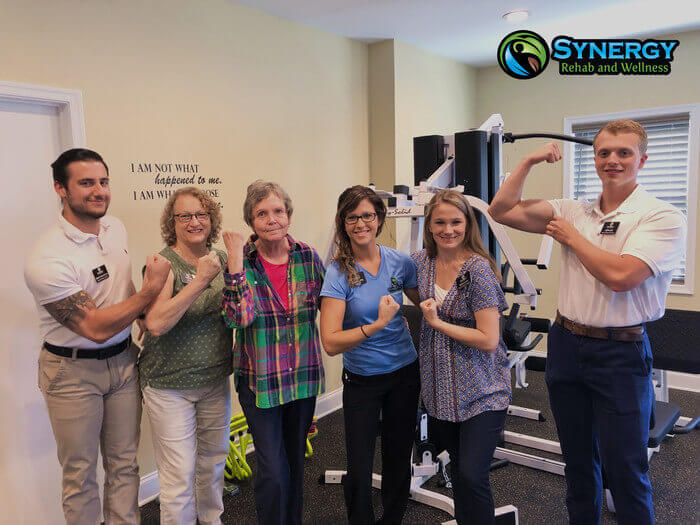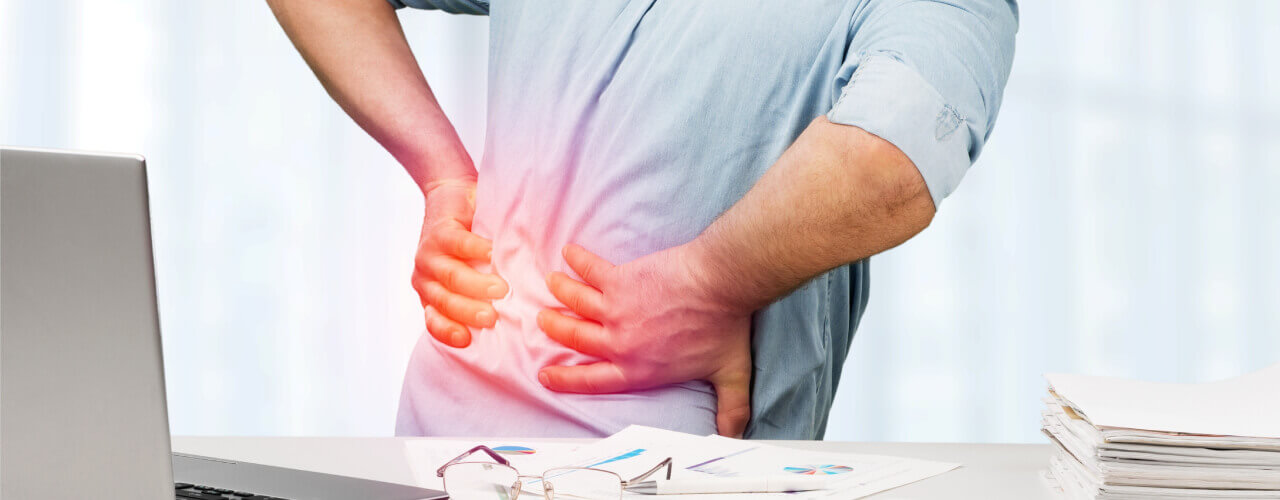Physical Therapy is Ideal for Dizziness & Vertigo
We’ve all had the sensation of being dizzy - as if you can’t focus, can’t see straight, can’t stand upright without swaying or falling. You may even experience “tunnel vision,” where your peripheral vision goes dark for a few seconds.
Dizziness is common and can have many causes. Vertigo, however, is a little different. While dizziness is typically synonymous with “lightheadedness,” which creates the illusion of being unsteady, vertigo is typically a response to a physiological factor that is causing a quite literal imbalance in your body. Those experiencing vertigo have reported feeling as if they are “rocking” or “spinning,” even when they are sitting still.
Dizziness: Causes and Symptoms
Just a few of the many factors that can lead to dizziness include lack of sleep, poor nutrition, overexertion, or a physical ailment, such as a head cold or the flu. Dizziness can also occur from something as simple as standing up too quickly after an extended period of rest. Some accompanying symptoms to dizziness may include:
- Loss of balance
- Lightheadedness or heavy-headedness
- Momentarily impaired vision (i.e. tunnel vision)
- Feeling woozy or faint
Vertigo: Causes and Symptoms
The causes of vertigo aren’t nearly as many. In fact, vertigo is most commonly caused by an imbalance in the inner ear, also known as the “vestibular system.” Your vestibular system helps you maintain your balance and center of gravity by sending messages to your brain regarding your movement. When this is impaired, the necessary messages become blocked from your brain, and your movement becomes affected. You may feel as if the world is spinning around you, you can’t focus your vision for prolonged periods of time, or you can’t stand/move properly without feeling like you are going to topple over. Some common causes of vertigo include:
- Benign paroxysmal positional vertigo (BPPV). This is the most common cause of vertigo. It occurs when the tiny calcium crystals located in your ears break apart and move around to different parts of the ear, where they are not supposed to be. This can cause sudden spinning sensations (vertigo) and inner-ear discomfort.
- Meniere’s disease. This occurs when fluid builds up in your ear(s). This typically includes “ringing” in your ear and sudden waves of intense dizziness that may last for hours. You may also experience momentary hearing losses.
- Vestibular neuritis. This is an inner-ear infection that can cause vertigo.
- Migraines. Migraines can impact your vestibular system, thus causing episodes of vertigo which may be coupled with a sensitivity to light or sound. Vision may also be impaired.
- Stroke. A stroke affects movement in your whole body. If you recently suffered a stroke, you may experience waves of vertigo which may linger for extended periods of time.
Some accompanying symptoms to vertigo may also include:
- Inability to focus or remain alert
- Double vision
- Nausea or vomiting
- Arm or leg weakness
- Difficulty seeing or speaking
- Sweating
- Abnormal eye movements
Get back on your feet with physical therapy:
Both dizziness and vertigo can hinder your daily life, limiting your ability to perform even the simplest of tasks. Luckily, no matter what the cause may be, physical therapy for dizziness and vertigo can help. Synergy Rehab & Wellness is very successful at diagnosing and treating both dizziness and vertigo with vestibular rehabilitation.
Vestibular rehabilitation includes treatments such as the Epley maneuver and Cawthorne head exercises. The Epley maneuver allows for canalith repositioning, in order to move the broken calcium crystals in patients experiencing BPPV. Cawthorne head exercises focus on decreasing nerve sensitivity and reducing the effects of vertigo.
In Staunton or Waynesboro, VA, recovery from vertigo is only offered in select practices, Synergy Rehab & Wellness being one of them. Our advanced methods and diagnostic tools have earned us a reputation as being one of the most successful Staunton or Waynesboro, VA physical therapy practices for treating dizziness and vertigo. If you are experiencing either of these conditions, contact us to request a free discovery session today. We will help you get back on your feet as quickly as possible.
What are the symptoms for arthritis pain?
Do your joints feel stiff, achy, or painful, especially when you wake up in the morning? If so, you may be experiencing the effects of arthritis. This is one of the most common symptoms of arthritis, but it is common to also expereince accompanying symptoms. Other sensations you may experience with arthritis include pain in the affected region, which may spread to surrounding body parts; persistent stiffness; inflammation; muscle spasms, joint creaking, clicking, or popping sounds; increased pain with certain activities, such as work or exercise; decreased range of motion in the affected area, abnormalities in gait, such as limping; swelling; weakness; and a warm sensation in the affected joint.
What are the best physical therapy treatments for arthritis pain?
Regardless of the cause of arthritis, physical therapy plays a major role in the treatment of its symptoms. Your physical therapist will conduct a physical evaluation to analyze your joint movement, muscle strength, and overall function, in order to pinpoint the exact areas that are causing you pain. You will then be prescribed a personalized treatment plan, focused around your specific needs. Treatment plans will include targeted stretches and exercises aimed at relieving your pain and improving your function, in addition to any specialized methods your physical therapist deems fit. This may include manual therapy, ice and heat therapies, electrical stimulation, or ultrasound. Your physical therapist may also include additional services as needed, such as weight management techniques to help ease some stress on your joints, and/or posture improvement to relieve stiffness and prevent injury.
Can arthritis affect different body parts?
There are over 100 different types of arthritis, containing monoarthritis (where only one joint is affected) and oligoarthritis (where multiple joints are affected). According to the Centers for Disease Control, roughly 54.4 million U.S. adults are diagnosed with some form of arthritis per year. As we age, the cartilage in our joints wears down, causing painful bone-on-bone rubbing, inflammation, stiffness, and pain. While it is possible for arthritis to develop in any of the joints, the fingers, elbows, shoulders, lower back, hips, and knees are among the most common.
Can arthritis be cured?
While there is no cure for arthritis yet, it is possible to alleviate arthritic symptoms by improving your joint movement, muscle strength, balance, and coordination through physical therapy treatments. In some cases, physical therapy can even make it possible to eliminate symptoms entirely. For best results, it is in your best interest to consult with a physical therapist as soon as you begin noticing arthritic symptoms. The sooner they get treated, the easier they are to manage. Whatever type of arthritis you may be suffering from, physical therapy undoubtedly plays an important role in pain relief. In addition, it can also help you avoid the need for harmful pain-management drugs or invasive surgical correction.



